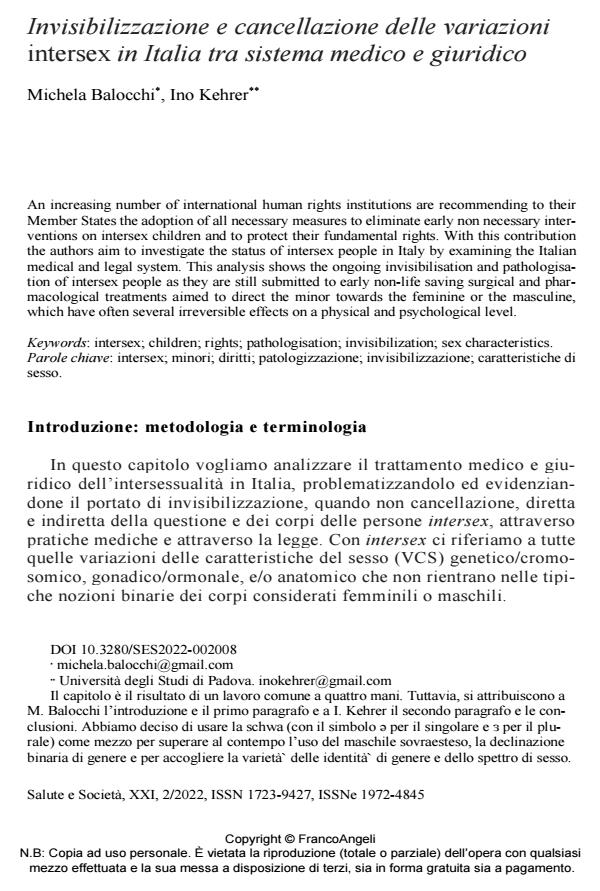Invisibilizzazione e cancellazione delle variazioni intersex in Italia tra sistema medico e giuridico
Journal title SALUTE E SOCIETÀ
Author/s Michela Balocchi, Ino Kehrer
Publishing Year 2022 Issue 2022/2
Language Italian Pages 16 P. 98-113 File size 122 KB
DOI 10.3280/SES2022-002008
DOI is like a bar code for intellectual property: to have more infomation
click here
Below, you can see the article first page
If you want to buy this article in PDF format, you can do it, following the instructions to buy download credits

FrancoAngeli is member of Publishers International Linking Association, Inc (PILA), a not-for-profit association which run the CrossRef service enabling links to and from online scholarly content.
An increasing number of international human rights institutions are recommending to their Member States the adoption of all necessary measures to eliminate early non necessary inter-ventions on intersex children and to protect their fundamental rights. With this contribution the authors aim to investigate the status of intersex people in Italy by examining the Italian medical and legal system. This analysis shows the ongoing invisibilisation and pathologisation of in-tersex people as they are still submitted to early non-life saving surgical and pharmacological treatments aimed to direct the minor towards the feminine or the masculine, which have often several irreversible effects on a physical and psychological level.
Keywords: intersex; children; rights; pathologisation; invisibilization; sex characteristics.
- Quanti generi di diversità? Margherita Graglia, pp.31 (ISBN:979-12-215-0362-3)
Michela Balocchi, Ino Kehrer, Invisibilizzazione e cancellazione delle variazioni intersex in Italia tra sistema medico e giuridico in "SALUTE E SOCIETÀ" 2/2022, pp 98-113, DOI: 10.3280/SES2022-002008